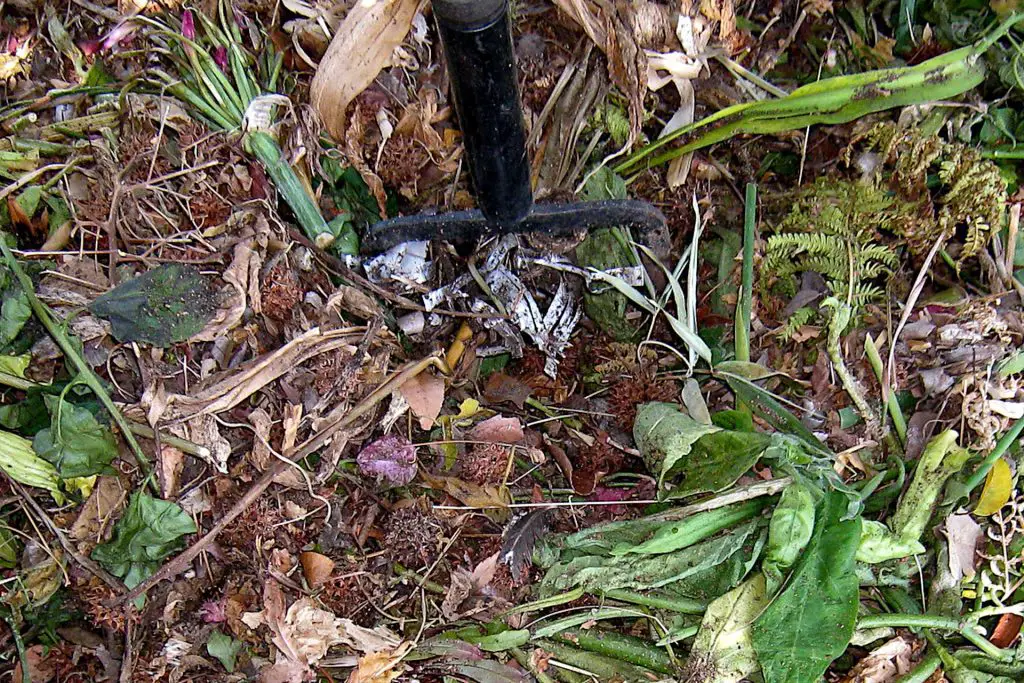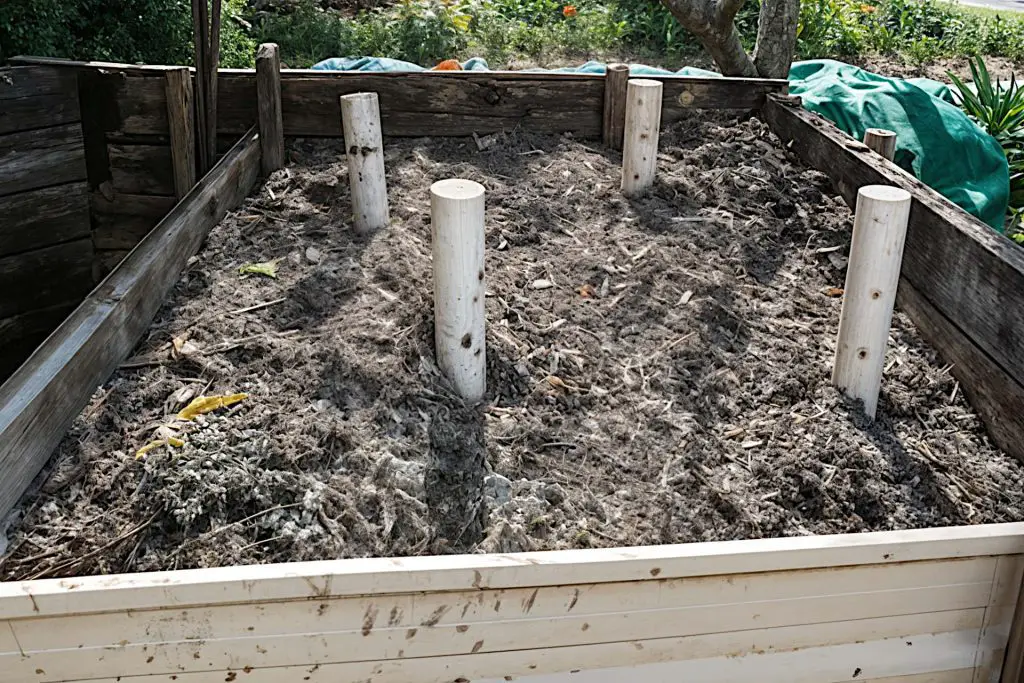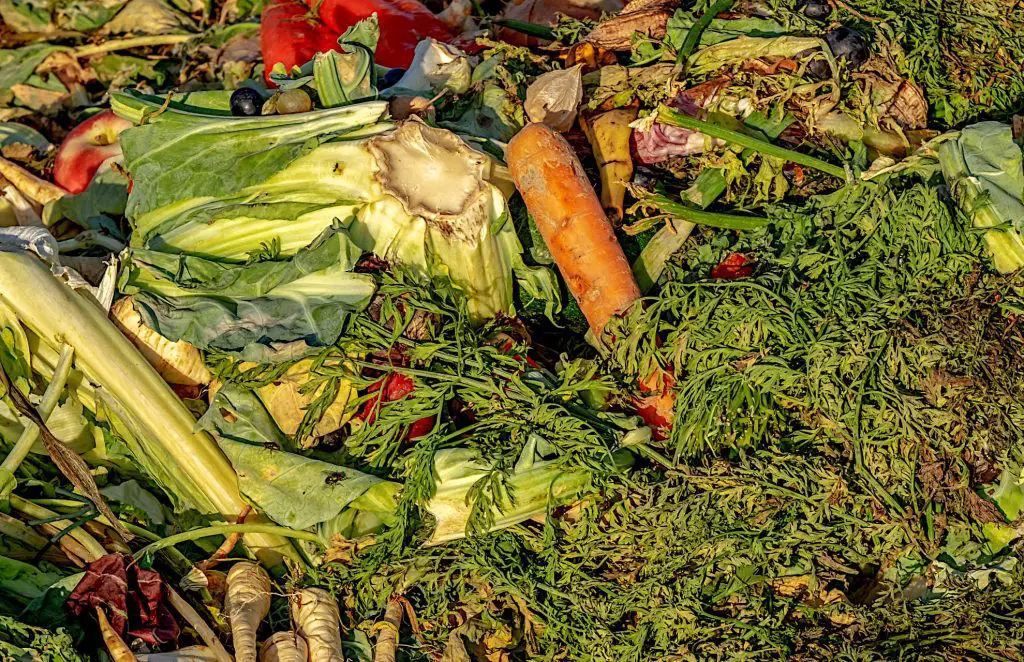To Turn or Not to Turn: Passive Composting vs Active Composting
There are many ways in which you can compost but all of them fit into two distinctive types, either active composting or passive composting. Each type has its advantages but often the choice of which to use will come down to your circumstances and the specific application.
There may be reasons or hindrances that dictate the approach you take, you may not have the time for a total active gardening approach or you are happy being a passive gardener. In this article, we will look at the advantages and disadvantages of both approaches.
With active composting, you are engaged in and look to control the composting process whereas with passive composting you let nature take its course. As to which approach is better will depend largely on the circumstances of the application as well as personal preference.
Understanding How Composting works

In order to be able to consider which approach to take it is useful to understand how the composting process works.
Composting is the decomposition of organic matter through a chemical reaction between carbon and nitrogen, together with oxygen and moisture present in the organic material. The chemical reaction encourages the production of microbes in the decomposing material.
It is these microorganisms that break down the organic matter into simpler compounds, creating humus (sometimes referred to as ‘black gold’) that can be used by plants as nutrients. The higher the microbial population, the faster the process becomes.
No Turn Composting: Passive Composting

It is easier to start by looking at passive composting to get a better understanding of how active composting will differ. In general, passive composting involves limited or next to no input from you to generate finished compost, as the process is left to a large extent to nature.
Since the dawn of time nature has naturally composted organic materials turning dying or exhausted vegetation and manure into nutrients creating natural soil amendments that will feed the next generation of plants. This process is often referred to as the nitrogen cycle or the growing cycle.
In creating composting we are replicating this natural process to create a nutrient-rich material that we can add to our soil. Whereas with nature this is a truly passive process with composting, even passive composting there is some human agency required.
This can be limited to just assembling your compost heap, piling up various types of organic material, through to calculating the right carbon to nitrogen ratio, and then letting nature take over.
This method is generally considered cold composting but cold composting can be taken closer to active composting the more effort that you employ. In reality, there is a large gray area that some might consider passive whilst others would consider active composting.
Decomposition with No Turn Composting
The flip side of passive composting is that without turning you are not going to provide the microbes with oxygen fast enough for them to be at their most efficient meaning decomposition is far slower and thus the pile will take much longer to become useable compost.
There are two possible ways in which you can help speed up decomposition. One is to use an activator to speed up the process and secondly is to find an alternative way to get oxygen into the pile.
Compost Activators
The simplest way to speed up the process is to increase the nitrogen content. This can be achieved by using a variety of compost activators. The downside of this is that with certain activators if you apply too much you run the risk of producing ammonia.
| Compost Activator | Description |
|---|---|
| Green Manure | Fresh plant materials such as grass clippings, green leaves, and cover crops. Rich in nitrogen, they balance carbon-heavy materials and enhance microbial activity. |
| Kitchen Scraps | Fruit and vegetable peels, coffee grounds, and tea bags. High in nitrogen and moisture, they provide essential nutrients and water for composting microorganisms. Avoid meat, dairy, or oily foods. |
| Manure | Animal manure from herbivores like cows, horses, rabbits, and chickens. Excellent nitrogen source with beneficial bacteria. Ensure it’s well-aged or composted to avoid pathogens and excessive ammonia. |
| Alfalfa Meal | High-nitrogen organic fertilizer that boosts microbial activity. Provides nitrogen and growth stimulants, enhancing decomposition. Can be mixed directly into the compost or brewed into a compost tea. |
| Blood Meal | Rich in nitrogen, it can be added in small amounts to accelerate decomposition. A dried, powdered form of animal blood that decomposes quickly, releasing nitrogen and promoting the breakdown of carbon materials. |
| Fish Emulsion | Liquid fertilizer made from fish waste, providing a quick nitrogen boost. Easy to apply and quickly absorbed by composting organisms. Dilute with water and pour over the compost pile. |
| Seaweed | Contains trace minerals and nutrients that enhance microbial growth. Adds nitrogen and essential minerals like potassium, magnesium, and iodine. Rinse to remove excess salt before use. |
| Compost Tea | Liquid solution made by steeping compost in water, introducing beneficial microbes. Boosts microbial activity and adds nutrients to the compost pile. Steep mature compost in water for 24-48 hours, strain, and apply. |
| Coffee Grounds | Rich in nitrogen, they can be added directly to the compost pile. Slightly acidic, helping to balance alkaline materials. Improve compost structure, aiding aeration and drainage. |
| Urine | High in nitrogen, it can be diluted with water and used to moisten the compost. Provides a concentrated nitrogen source. Dilute at least 10:1 with water to prevent ammonia buildup and odor issues. |
| Urea or Ammonium Nitrate | Urea and Ammonium Nitrate are concentrated sources of nitrogen can lower the carbon-to-nitrogen (C:N) ratio without altering the moisture content of the compost mix. They provide the required amount of nitrogen in a low nitrogen mix at low cost. However, be careful as they can result in ammonia production if not used properly. |
| Commercial Activators | Commercial activators products like Gardener’s Supply’s Super Hot Compost Starter, which contains peanut meal, kelp meal, alfalfa, and poultry litter, can help jump-start the decomposition of a compost pile. Simply add the activator to your compost, wet it down, and let it work. |
Aerating Your Compost Pile

The second option to to introduce a passive supply of oxygen into the pile. Air can be introduced using a series of pipes the run through the pile. The pipes have holes drilled into them with the ends of the pipes free from obstruction so that air can pass through thus aerating the pile passively.
This is most effective way of achieving this so that the pipes remain fixed in place is to incorporate them into a compost bin. You can provide a stronger flow of air if you hook up an air compressor and pump elevated volumes of air through the pile two or three times a week, but this is obviously less passive.
Other Forms of Passive Composting
Other composting methods that are almost entirely passive include vermicomposting and Bokashi (bucket) composting.
Vermicomposting is probably the most effective at producing a decent amount of compost but it suffers similar drawbacks to traditional pile or bins in that three months or as long as six months for earthworms to digest organic matter and turn it into usable soil, which might be too long for those with active gardens but you do need to pay attention to your worm bin to ensure it doesn’t smell.
Bokashi , on the other hand is highly efficient at decomposition with compost being produced in less than a couple of months. However, although the process in theory an be scaled up itsmain draw back is the small amount of compost produced. Great for indoor plants but not enough to satisfy even a modest sized garden.
What is Active Composting
True active composting requires a considerable amount of human input into creating finished compost. The main difference between the active and passive composting processes is the regulation of the components of the chemical reaction that causes the organic materials in the compost pile to decompose.
With passive composting, the organic matter is slowly broken down by microorganisms in the near absence of oxygen. This process can take months or even years. In active composting, finer control of a compost heaps carbon and nitrogen content together with the addition of more oxygen dramatically speeds up the decomposition process.
This is because by regulating these inputs, the internal temperature of the compost pile can reach up to 150-160°F during the stages of the composting process. This high temperature kills most of the pathogens and weed seeds that might be present in the organic matter and is why the process is referred to as hot composting.
The elevated temperature is also important because microorganisms thrive in environments that are warm, moist, and have plenty of oxygen. This results in the microbial population increasing allowing the faster breakdown of the complex carbohydrates and proteins in the organic matter, into simpler compounds such as carbon dioxide and water. The process of active composting will usually speed up considerably the decomposition of food waste, manure, and other organic materials.
Carbon to Nitrogen Ratio
The carbon to nitrogen ratio is an important factor in active composting. The ratio should be between 25:1 to 30:1. The lower the ratio, the more amount of nitrogen present, and the faster the decomposition process. However, too low a ratio can cause ammonia to be given off and create a bad smell.
The carbon to nitrogen ratio can be adjusted by changing the amounts of carbon or nitrogen-rich materials within the compost pile. By adding more carbon-rich materials (brown materials) such as leaves, straw, cardboard, or wood chips to the compost pile you can increase the ratio. Conversely, adding more nitrogen-rich materials (green materials) such as vegetable scraps or other kitchen scraps, grass clippings, manure, and seaweed, amongst others, can decrease the ratio.
Active composting is a great way to speed up the decomposition of organic waste. The finished humus is rich in nutrients and is perfect for use in gardens and farms.
The Differences between Active and Passive Composting
It’s important to know the difference between active and passive composting before starting your own compost pile. Active composting requires more work on your part, but it will produce the finished product more quickly. Passive composting is less labor-intensive, but it will take longer to produce finished compost.
| Active Computing | Passive Composting | |
|---|---|---|
| Time | Faster. It can be as quick as 6 weeks for the decomposition process to produce finished compost | Can take 6 months or even several years for materials to decompose in a passive compost pile |
| Effort | Can be extensive from monitoring pile temperature to regular aeration through turning. | Generally, it can be as little as assembling the compost heap. But occasional turning to speed it up is sometimes employed |
| Monitoring | Monitoring of the internal heap temperature and water content | Often referred to as no turning composting minimal required, nature will just do its job |
| Quality | The higher heat destroys any pathogens or weed seeds in the organic waste | There is a possibility that any pathogens or weeds seeds in the organic waste are not destroyed |
| Pest | With decomposition and higher temperatures between 6 -12 weeks less chance of pests | More chance of pests as the compost will be there longer |
| Equipment | Temperature probe | Nothing |
| Material | Careful monitoring of the carbon ratio of the organic waste you add to ensure fast decomposition | Any garden waste can be added to the pile as careful monitoring of ratios is not crucial |
The Pros and Cons of Active Composting
There are pros and cons to both active and passive composting approaches. Active composting is more labor-intensive but it results in faster decomposition. Passive composting is slower but it requires less work.
The Pros of Active Composting:
- Faster decomposition means you can use your compost sooner.
- You can control the temperature of the compost, which speeds up the process.
- You can add or remove materials as needed, which gives you more control over the final product.
- The more certain destruction of pathogens and weed seeds that could be present in an active pile.
The Cons of Active Composting:
- It requires more effort to maintain an active compost pile.
- If not managed properly, an active compost pile can produce unpleasant odors.
The Pros of Passive Composting:
- It is low-maintenance; once you set up your compost pile, you can let it do its thing with little intervention from you.
- It produces fewer odors than an active compost pile.
The Cons of Passive Composting:
- It takes longer for materials to break down in a passive compost pile if you don’t employ an activator.
Which One is Better?

So, which one is better for gardeners? It depends on your needs and preferences. Here’s a quick rundown of each method to help you decide which one is right for you.
Active composting requires more effort but can be done year-round, even in cold weather. You’ll need to turn the pile regularly to aerate it and speed up the decomposition process. But if you have the time and space, active composting can be a great way to reduce your food waste.
Passive composting is simpler and doesn’t require as much maintenance. You can let the elements do their work and nature will take its course. However, passive composting can take longer, so it may not be the best option if you’re looking for quick results.
Final Thoughts: Active Composting vs Passive Composting
Which composting method you choose will come down to a number of factors such as circumstances, use case, and personal preference for active gardening or being a passive gardener. In truth, you may well combine the two approaches. For example, just by leaving grass clippings on your lawn, you are engaging in passive composting as they will quickly break down by themselves to add nutrients to the soil.
What is more useful is being able to determine which is the right approach for given circumstances. The chances are that you will use a combination of both types to get the best overall results for your garden
Overall, active composting is a more efficient and effective method of composting than passive composting. Active composting requires more effort and attention, but the end result is worth it. With active composting, you can control the temperature of the compost pile, which allows for faster decomposition. You can also add and remove materials from the pile as needed, which helps to aerate the pile and keep it from getting too wet or too dry.
Commonly Asked Questions
Q: What is the difference between active and passive composting?
A: The main difference between active and passive composting is that active composting requires the regular turning of the material to aerate it, while passive composting does not. Passive composting relies on natural processes to break down the material, while active composting uses mechanical means to speed up the process.
Q: Active and passive composting, which method is better?
A: There is no definitive answer to this question. It depends on your specific needs and preferences. If you want to produce compost quickly, then active composting may be the best method for you. If you do not want to put in the effort of regularly turning the material, then passive composting may be a better option.
Q: Can I use both active composting and passive composting at the same time?
A: Yes, you can use both methods simultaneously. This can be helpful if you have a large amount of material to compost and want to speed up the process.
